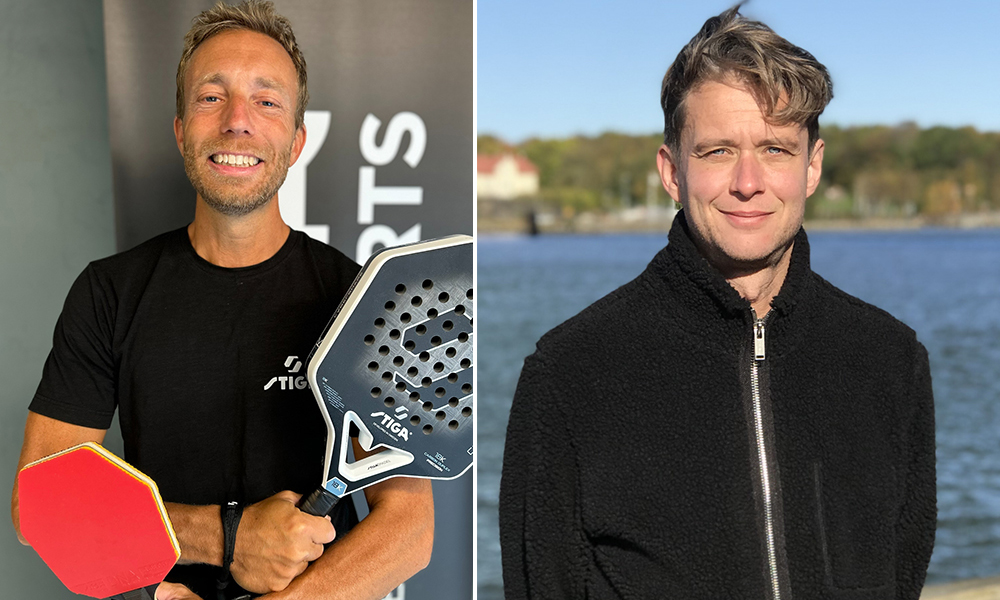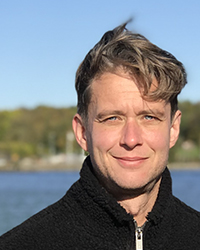KTH research behind the hexagonal table tennis racket

The eyes of the world were on the hexagonal table tennis racket when Truls Möregårdh won Olympic silver in 2024. Behind the initiative for the new design is KTH alum Andreas Zandrén, CEO of Stiga Sports, who developed the racket in collaboration with KTH researcher Mikael Karlsson.
“Since I have a KTH background myself, it is natural for me to use engineering to find the best product solution,” says Andreas Zandrén.
When civil engineer Andreas Zandrén took over as CEO of Stiga Sports in 2019, he set his sights on product development.
“Since innovative change is my great passion, I wanted to create something new. One of the first questions I asked was why table tennis rackets have looked the same since the 19th century and whether they really need to have a round shape.”

To test new design ideas, there was a need for scientific expertise and testing equipment.
“I contacted Mikael Karlsson, a KTH researcher in technical acoustics, who set up a research project to measure sound frequencies and hitting surfaces, among other things.”
Tests lasted two years, under strict secrecy for patent reasons, and after analysing some 20 different shapes, the ultimate solution was found.
“Combining the racket's playing characteristics with an attractive shape was a challenge, and designer Jörgen Lindström at Stiga Sports did an outstanding job.”

Mikael Karlsson, what were the main testing methods used by your research team?
“We measured the vibration response of the table tennis racket frames. We did some calculations, but mainly performed experiments using so-called experimental modal analysis. This is a standard method that we teach in our courses. We used machine learning methods to link the measurement results to the properties we were interested in.”
“We were interested in understanding and relating the test results to how users perceived the characteristics of the racket: how ‘fast’ is it, what feedback do you get in your hand when you hit the ball, and where and how big is the hitting surface and ‘sweet spot’.”
The “sweet spot” is the area at the top of the racket where the player wants the ball to hit. According to the test results, the angular racket is less sensitive than the classic round table tennis racket to where it hits the ball, as the total hitting surface is 11 per cent larger.
Would the same test methods be used today, in similar projects?
“Yes, in the latest development of angular paddle rackets, we have conducted studies where we measured fewer points using the same method,” Karlsson says.
After patenting the hexagonal table tennis racket, Stiga Sports and Andreas Zandrén went on to develop the design of padel rackets. Among other things, KTH's wind tunnel laboratory was used to measure how air resistance is affected by the angular shape.
“The test players experienced a nice improvement in speed and control and thought the new racket cut through the air more easily”, Zandrén says.
Do you have plans to further develop tennis- and badminton rackets in the future?
“It is possible that we will go ahead with it. It feels great that our product development has already contributed to public health in some way. Racket sports are big in Sweden, and now more and more people of all ages are getting involved after the success in the Olympics. It feels fantastic to see the commitment, especially among children and young people, and a big vision is to get more people active. I want to continue this work in the future.”
“To succeed in driving development forward, we need more collaboration between academia and industry, especially in a small country like Sweden. Linking product development with research and science is a win-win situation for society as a whole.”
Text: Katarina Ahlfort
Photo: Stiga Sport, Private
